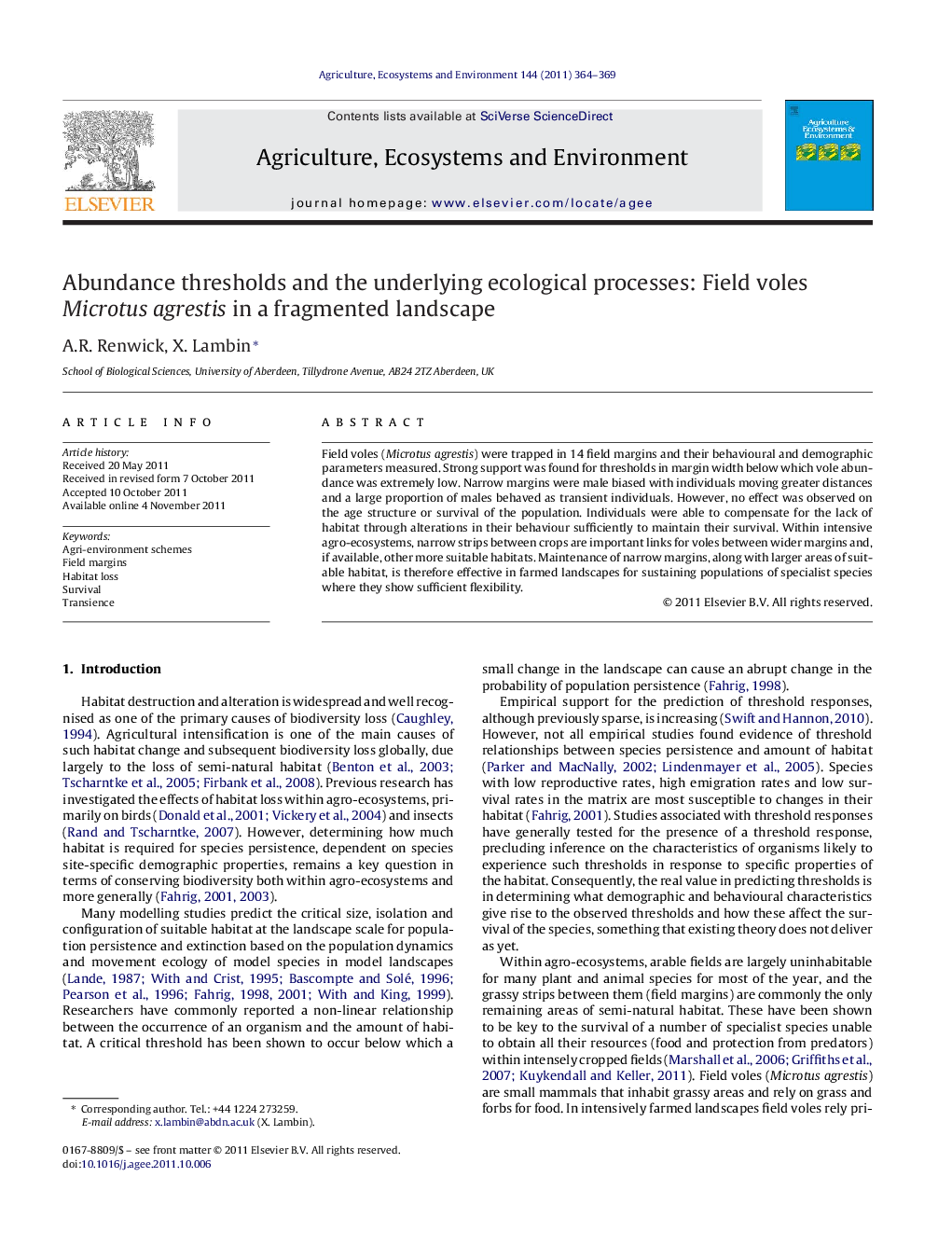| Article ID | Journal | Published Year | Pages | File Type |
|---|---|---|---|---|
| 2414787 | Agriculture, Ecosystems & Environment | 2011 | 6 Pages |
Field voles (Microtus agrestis) were trapped in 14 field margins and their behavioural and demographic parameters measured. Strong support was found for thresholds in margin width below which vole abundance was extremely low. Narrow margins were male biased with individuals moving greater distances and a large proportion of males behaved as transient individuals. However, no effect was observed on the age structure or survival of the population. Individuals were able to compensate for the lack of habitat through alterations in their behaviour sufficiently to maintain their survival. Within intensive agro-ecosystems, narrow strips between crops are important links for voles between wider margins and, if available, other more suitable habitats. Maintenance of narrow margins, along with larger areas of suitable habitat, is therefore effective in farmed landscapes for sustaining populations of specialist species where they show sufficient flexibility.
► Field voles show a threshold in abundance in relation to field margin width. ► A high percentage of males were transients and narrow margins were male sex biased. ► This suggests that narrow margins acted as movement corridors. ► Margin width had no effect on vole apparent survival.
